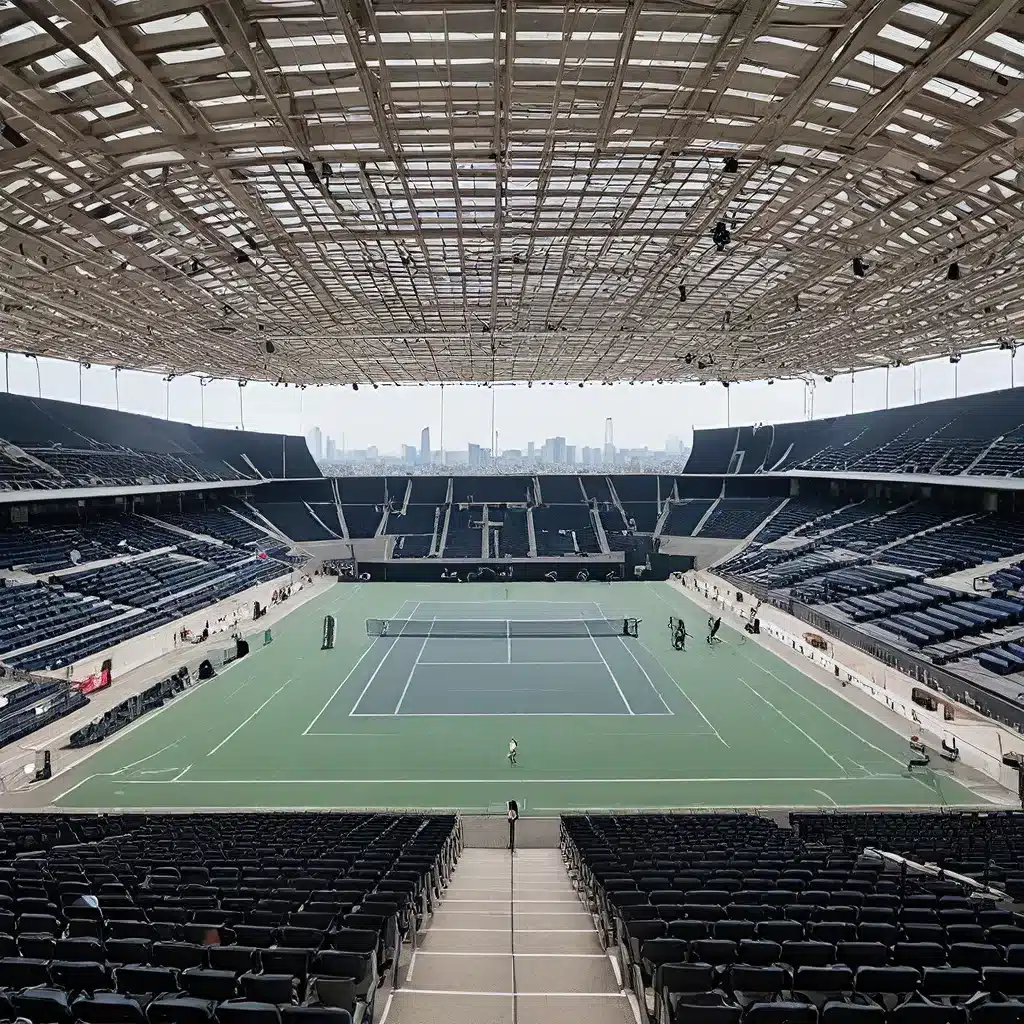
The Ariake Tennis Park, located in Tokyo, Japan, is a stunning example of modern stadium architecture that seamlessly blends form and function. Designed by the renowned Japanese architecture firm, Nikken Sekkei, this state-of-the-art tennis facility has become a centerpiece of the city’s vibrant sports landscape.
A Striking Silhouette
The Ariake Tennis Park’s architectural design is defined by its striking, angular silhouette. The main stadium, known as the “Ariake Colosseum,” is a marvel of contemporary engineering, featuring a sleek, curved roof that appears to float effortlessly above the playing surface. This bold, cantilevered design not only creates a visually captivating structure but also serves to maximize the venue’s seating capacity and enhance the spectator experience.
The Ariake Colosseum’s distinctive form is further accentuated by the extensive use of glass throughout the building, allowing natural light to flood the interior and creating a seamless connection between the indoor and outdoor spaces. This design choice not only enhances the overall aesthetic but also contributes to the venue’s energy efficiency, as the generous use of natural lighting reduces the need for artificial illumination.
A Harmonious Integration with the Surrounding Environment
The Ariake Tennis Park’s architects have paid meticulous attention to the integration of the facility with its surrounding environment. The complex is situated within the larger Ariake district, which is undergoing a significant transformation as part of Tokyo’s preparations for the 2020 Summer Olympics. The park’s sleek, modern design complements the area’s evolving urban landscape, creating a harmonious visual dialogue between the new and the old.
The proactive approach to environmental sustainability is another hallmark of the Ariake Tennis Park’s design. The facility incorporates a range of eco-friendly features, including energy-efficient lighting, water-saving systems, and even a state-of-the-art recycling program for the venue’s waste. These measures not only reduce the park’s environmental impact but also contribute to a deeper sense of civic responsibility and stewardship.
A Multifunctional Venue for the Future
Beyond its role as a world-class tennis facility, the Ariake Tennis Park has been designed to serve as a versatile, multifunctional venue that can accommodate a wide range of events and activities. The complex features a diverse array of amenities, including practice courts, training facilities, and even a community-oriented recreational area, making it an invaluable asset to the local community.
The park’s design also demonstrates a keen understanding of the evolving needs and expectations of modern sports fans. The Ariake Colosseum’s seating configuration, for example, has been carefully optimized to provide an immersive and engaging viewing experience, with no seat more than 55 meters from the central court. Additionally, the venue’s state-of-the-art technology infrastructure, including high-speed Wi-Fi and advanced audiovisual systems, ensure that visitors can fully immerse themselves in the live action and stay connected throughout their visit.
A Legacy of Innovation and Design Excellence
The Ariake Tennis Park’s design is a testament to the enduring legacy of Japanese architecture and the nation’s commitment to innovation. Nikken Sekkei, the firm responsible for the park’s design, has a long and distinguished history of creating iconic, game-changing structures that redefine the boundaries of what’s possible in the built environment.
From the park’s striking silhouette to its meticulous integration with the surrounding landscape, every element of the Ariake Tennis Park’s design reflects a deep understanding of the evolving needs and expectations of both athletes and spectators. As the world of sports continues to evolve, this remarkable facility stands as a shining example of how thoughtful, forward-thinking design can elevate the fan experience and create a lasting legacy for generations to come.
Readers looking to explore more exceptional stadium designs and experiences are encouraged to visit Old Stadium Journey, a comprehensive resource that celebrates the unique architectural and cultural offerings of sports venues around the world.

